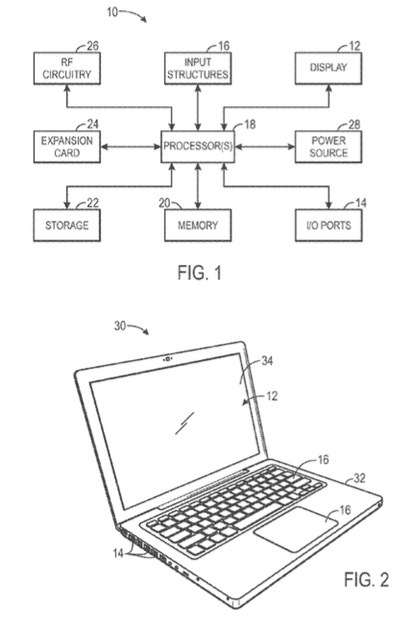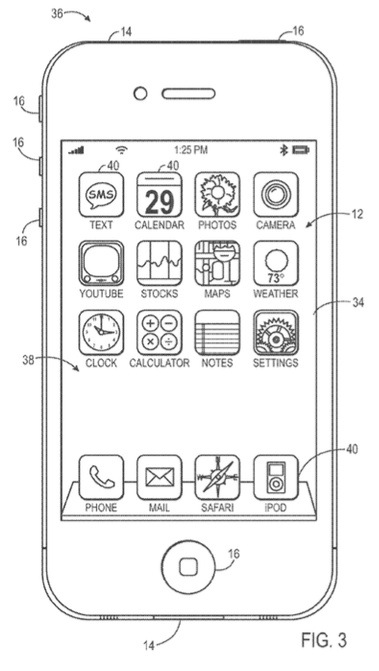An Apple patent (number 201202987378 for controlling reflection reflection LCD devices has appeared at the U.S. Patent & Trademark Office. Systems and methods are provided for controlling the light reflected from a display panel.
In one embodiment, a prism mirror and a diffuse reflector are positioned between the bottom polarizer and the liquid crystal layer of a pixel to control the polarization of reflected light transmitted through the display panel. The diffuse reflector diffuses light towards the prism mirror, and the prism mirror affects the polarization of the light. When the pixel is on, the liquid crystals of the liquid crystal layer may shift the polarization of the reflected light such that it can be transmitted through the top polarizer.
When the pixel is off, the liquid crystals may not substantially shift the polarization of the reflected light, and the reflected light may be polarized to be absorbed by the top polarizer. Accordingly, reflected light is substantially transmitted through the pixel when the pixel is on, and substantially absorbed by the top polarizer when the pixel is off.
Here's Apple's summary of the invention: "The present disclosure relates generally to display devices, and more particularly, to techniques for controlling reflections on display devices.
"This section is intended to introduce the reader to various aspects of art that may be related to various aspects of the present disclosure, which are described and/or claimed below. This discussion is believed to be helpful in providing the reader with background information to facilitate a better understanding of the various aspects of the present disclosure. Accordingly, it should be understood that these statements are to be read in this light, and not as admissions of prior art.
"Liquid crystal displays (LCDs) are commonly used as screens or displays for a wide variety of electronic devices, including such consumer electronics as televisions, computers, and handheld devices (e.g., cellular telephones, audio and video players, gaming systems, and so forth). Such LCD devices typically provide a flat display in a relatively thin package that is suitable for use in a variety of electronic goods. In addition, such LCD devices typically use less power than comparable display technologies, making them suitable for use in battery powered devices or in other contexts were it is desirable to minimize power usage.
"LCD devices typically include multiple layers, including a backlight, an LCD panel having a pixel matrix configured to selectively modulate the amount and color of light transmitted from the backlight, and a color filter layer which enables specific colors of light to be emitted (e.g., red, green, and blue). One technique for reducing the power usage of the LCD device includes implementing a reflective layer behind the liquid crystal panel of the LCD device, such that external light (i.e., ambient light, such as from sunlight, lamplight, etc.) may be reflected out from the display screen of the LCD device, thereby contributing to the illumination of the screen.
"However, while such techniques may decrease power consumption of the LCD device, reflections of external light may sometimes contribute to undesirable display effects. For instance, external light may reflect evenly across the display surface and from both black and white pixels, thereby decreasing the contrast ratio of the display, especially in brightly lit environments. "
The inventors are Cheng Chen and John Z. Zhong.














